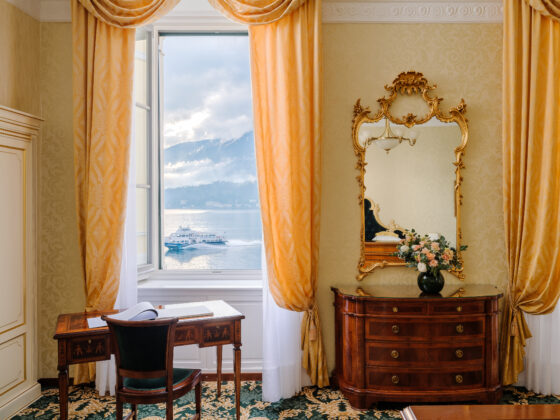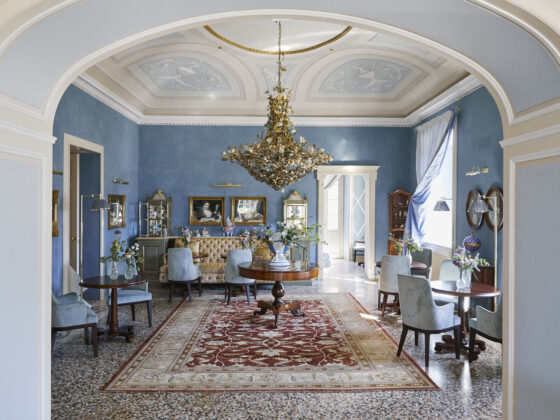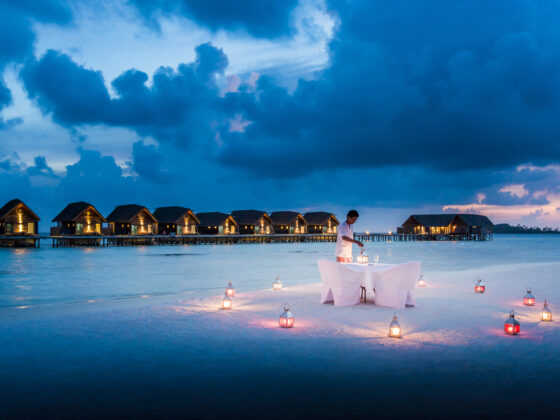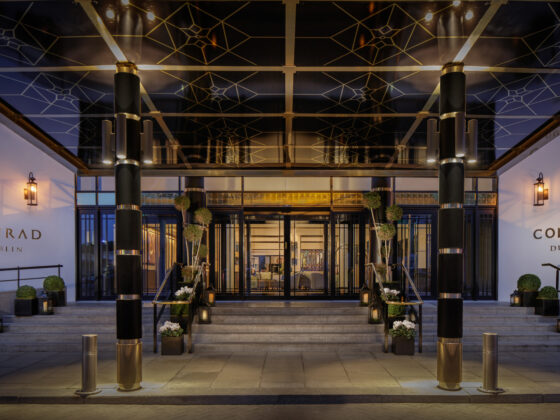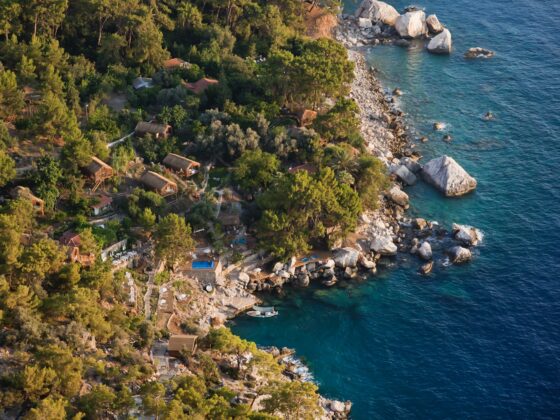The Dhofar Khareef arrives in the south of Oman around late June and famously delivers its humidity and rolling mists for the next three months. At two o’clock in the afternoon the light conveys an eerie appearance of dusk. The unique microclimate covers an area from Thumrait, north of Salalah all the way south to beyond the border with Yemen. This is the time of year when thousands of Muscati Omanis abandon their northern homes to relocate and take advantage of sopping rains and cooler temperatures. However not everyone is endeared to this weather phenomenon. Some European and American tourists prefer to see Salalah in the weeks and months that follow the Khareef. From October onwards the skies are a glorious blue with nary a cloud and the temperature hovers around 28 degrees. It is Dhofar wearing her more sedate garb: perfect weather for exploring the region’s ancient ruins and top geographic locations.

If you are lucky enough to stay on the beach of Dahariz near the town centre you can see long lines of coconut palms waving at the Indian Ocean in postcard perfection. The traditional Salalah souk a few kilometres away is an absolute must. I counted 17 Frankincense shops, all stuffed to the ceiling with ornate burners, charcoal, bukhoor (resin-soaked wood shavings) and bag after bag of Frankincence. A plethora of body cremes and sweet waters alongside ointments and unguents lie in wait for the shopper who is inclined to the exotic. There are all manner of topical applications to enlarge and shrink different parts of the body and I even found a hair conditioner from Yemen made with camel urine!
Mirbat, 75 kilometres north of Salalah is a charming fishing village with aqua-trimmed boats strewn along the sand. In a fishermen’s catch you will find Hamour, Sharry, Djidhi, Squid, Tuna, Swordfish, Shark, Kingfish, BlueCrab and Prawns… sample their produce at the local restaurants while you gaze out at the boats. The lobster season begins in jNovember, ending in February. The succulent white flesh, grilled or steamed arrives on your plate at a fraction of the cost elsewhere and it is a taste sensation. Large old houses, Persian in design are situated close to the water. Their elegant doors and wind-sheared lattices hundreds of years old are just a few of the authentic features. Crenellations, curves and carved arches contribute to the visual delight. Some of these homes now face demolition so try to see them before they are consigned to history. Mirbat’s famous double-dome Mosque is not far inland where you can also explore the 300 year old cemetery.There is currently major restoration work underway on a large area of Mirbat aimed at an educational/tourist context. The work is slated to be finished by 2019.
Forty-five minutes’ drive south is Mughsayl with Oman’s most impressive coastal scenery. Limestone cliffs plunge 100 metres to the sea. In recent months a number of cafes have sprung up along the seafront near the famous blowholes – the prominent crowd- pleasers and essential for selfie – takers. Nearby is Fizayah, the nicest beach of the region, popular with locals who can while away the day over a home-made picnic, knowing the kids are safely swimming close by. From Fizayah you can easily take the road south to the Yemen border. We saw many camels as we drove along this spectacular road.
The hinterland of Mughsayl at Jamal al Qara (Qara Mountain) sustains the last enclave of the Arabian Leopard. Sultan Qaboos has established an active conservation program for PANTHERA PARDUS but one’s chances of spotting a local leopard are slim. Leopards are solitary by nature and dwell deep in the jungle growth, rarely venturing into broad daylight. Nevertheless, this year, a local photographer, Khaled Bakhit Baqi, gained marvellous footage of a juvenile bounding across the cliffs at Fizayah. His short film is on Facebook.
At an undisclosed location high in caves of the mountains, there are Prehistoric drawings, approx 4000 years old. The pictures etched into the rock walls show camels, oryx, gazelle and ibex and a battle scene depicted between two warring tribes, one on horseback and the other advancing on camels. Although the colours have faded the scene lacks none of its vigour.

Thirty minutes’ drive from Salalah lie the ancient ruins of Samhamaran. Fortified with mountains from behind and in front by the great Indian Ocean, the city was named for its ruling king around1500 bc when it is believed it had a population of 200,000. The Samhamaran site boasts an immense repository where you can still see the storerooms for dates, frankincense and other comestibles. To deter thieves the merchants employed two design themes for the rooms. The first series were accessible only via the roof, and the second set of rooms had entrances so narrow that a man could barely slide in sideways, let alone remove a bag of frankincense! UNESCO has now joined the list of agencies offering patronage for the frankincense trees of attempts to cultivate the world, the them best and they hills, with dusty grey ready to snap at a incisions are made in oozes out which is hardened in the local months. The globules categories: Green, superior AL HOJARI. To live in its nest atop and the heat from the fire from whence the to imagine that the this substance that is ceremonies worldwide cosmetics and candies gnarly strange-looking Dhofar. Despite them in other parts of microclimate suits thrive across the barren branches, that look moments’ notice. After the bark, a whitish sap captured and caves for about 3 then graded into 4 Brown, White and the The Phoenix was said the frankincense tree leaves produced the Phoenix rose. It is hard exquisite aroma from used in liturgical and even added to is derived from such a tree! But let’s not forget that it was Frankincense from Dhofar, Myrrh from Yemen and Gold from Ethiopia that the three wise men carried on their journey to Bethlehem.
Several kilometres from Samhamaran lies Shisr, the ancient city of Ubar, as it is known in the Bible. You can see what is left of the fifty gilded pillars that reached to the sky. My guide, Alicia, explained that the carving is typical of the period and evident at other archeological digs. According to legend, the citizens of Ubar angered God by squandering their wealth and time – so God, in a fit of pique, plunged the city into a great hole which, with the today’s knowledge , was probably the opening up of a sinkhole. Whatever may, or may not have happened, the area is well worth a visit, to meander back in time to an event that took place before the birth of Christ. No matter what season one visits Oman, a trip to her second city, Salalah, is essential for the jaw-dropping sights and the fun shopping.
Michele Stayner was taken around Salalah by Alicia Tosi at La Vie de Magan tours
+968 9731 1458
laviedemagan.org
Oman Air flies several times daily Muscat to Salalah
www.OmanAir.com
+968 2453 1111
Written by: Michele Stayner
michelestayner@gmail.com


